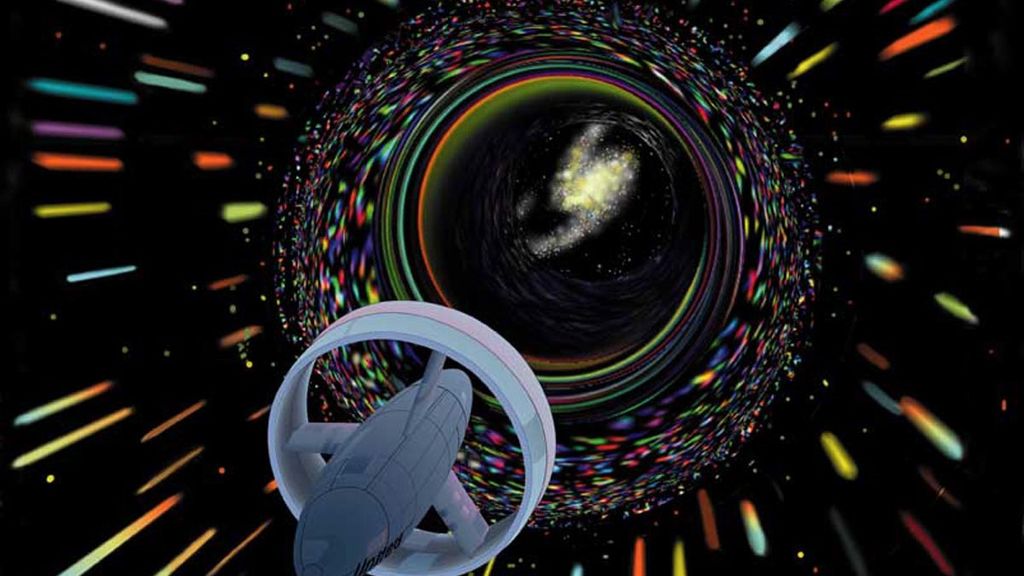The hunt for wormholes: How scientists look for space-time tunnels
By Colin Stuart, All About Space magazine 1 day ago
Wormholes, a science fiction staple, might be real after all.

An artist's interpretation of utilizing a wormhole to travel through space. (Image credit: NASA)
Wormholes — shortcuts in space and time — have long been a staple of science fiction. But some scientists believe we may soon be able to prove that they are a real part of the universe—as real as the sun and the stars or you and I. The scientific term for this exotic object is an Einstein-Rosen bridge, which is a clue as to where the idea came from.
Wormholes are rooted in Albert Einstein's general theory of relativity — his groundbreaking masterpiece that turned our ideas about gravity on their head. For centuries we thought we knew how gravity worked, thanks to Isaac Newton. Apples fell to the ground, and Earth stayed in orbit around the sun because of a gravitational pull between the objects. Yet Einstein saw it differently, suggesting that what we experience as gravity is simply a bending of space and time. Under this radical new regime, Earth orbits the sun because our star's mass warps the space around it, much like a bowling ball would warp a bed sheet if it were placed in the center of it. Our planet is simply following the local curvature of this fabric, which Einstein called 'space-time'.
Such a crazy idea was in dire need of experimental evidence to back it up. Crucially, a solar eclipse in 1919 offered just such an opportunity. When the moon blocked out the sun, it was dark enough to see stars close by. Yet we don't see these stars where they really are because the sun's gravity bends their light on its way to us. Newton and Einstein's competing pictures of gravity predicted different amounts of bending, allowing us to see who was right. Einstein came out on top: Massive objects do indeed bend the space-time around them.
Imagine space as a vast sheet of paper. You live at one end and you want to travel to the other end. Ordinarily you'd have to trudge across the entire length of the page to get there. But what if you folded the paper in half instead? Suddenly, where you are and where you want to be are right next to each other. You simply have to jump that tiny gap. We call these objects wormholes because it is like a worm trying to navigate its way around an apple. To get from the top to the bottom it has two choices: Crawl around the outside, or chew a shortcut through the middle.
More:
https://www.space.com/hunt-for-wormholes
